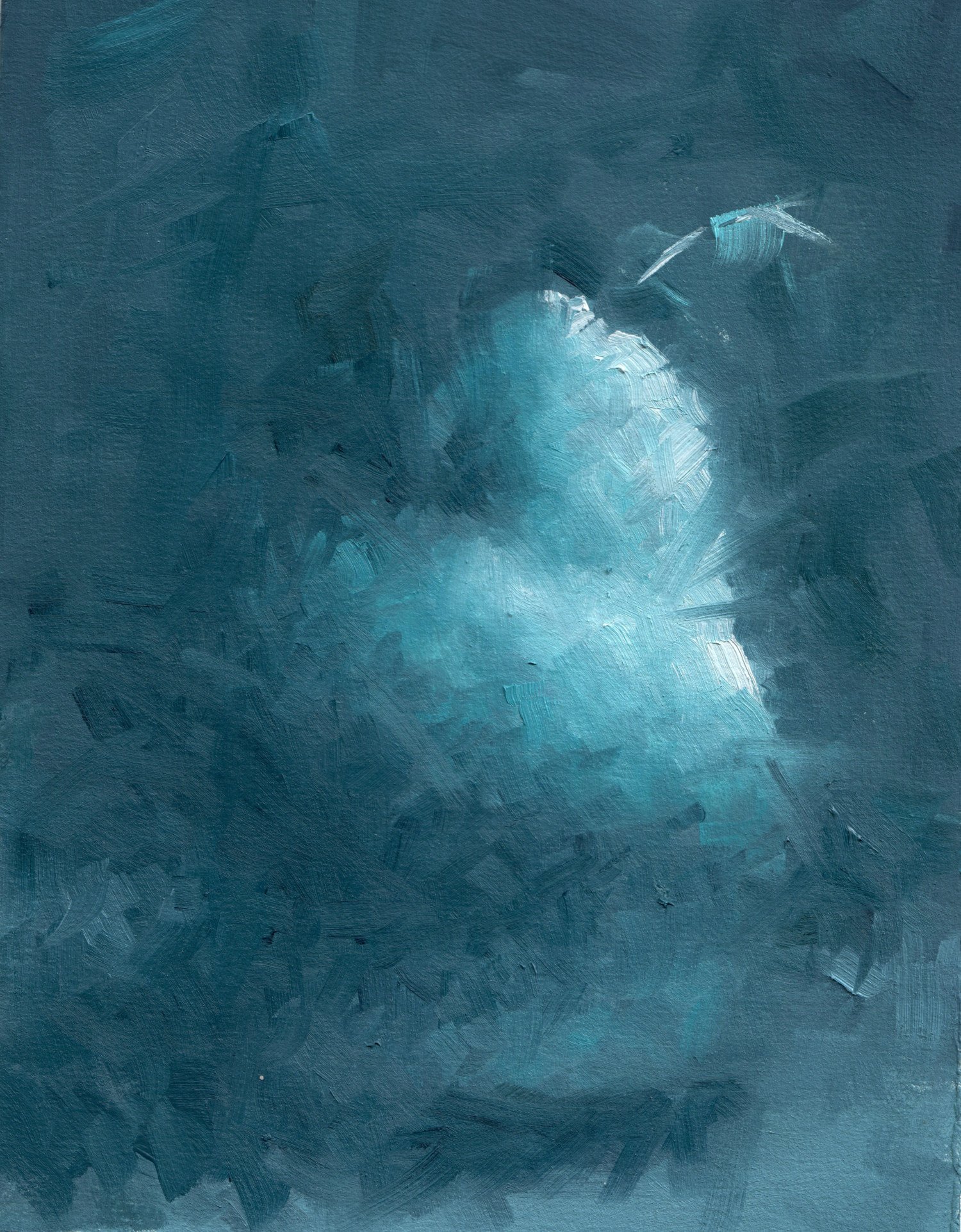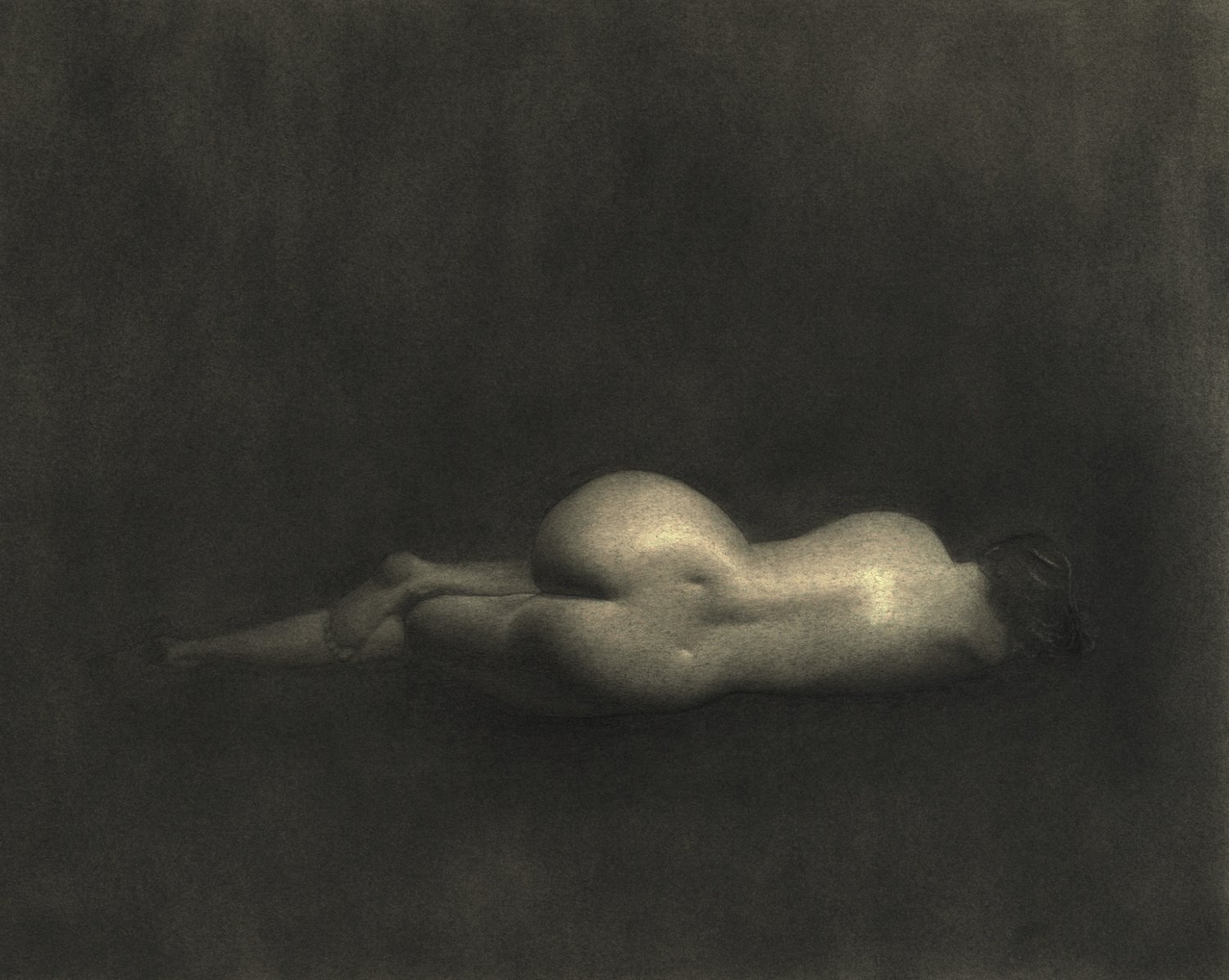Through the Legion Artist Program, Nicholas Lantz tested a variety of papers for his charcoal work. At Legion, we always suggest testing several papers, as each artists hand is different and will find different results.
Learn more about Nicholas Lantz’s work and his journey exploring different surfaces.
“I was really surprised how differently these papers performed given how similar they looked. I expected there to be minor differences, but each paper had its own characteristics.”
Tell us about yourself and your work.
My name is Nick Lantz, I am an artist currently living in Cleveland Ohio. During the day I work as an electrical engineer doing research and development for various space-based systems. Art is a bit of therapy in that regard. Art gets me away from the computer, lets me turn off the rules and use my intuition.
My work evolves from year to year as my skill level and taste change. I think I’ve always been chasing the same type of work and style, but I still haven’t totally found it yet. The journey continues. I’m really inspired by artists like Jeremy Mann, Zin Lim, Carolyn Anderson, Steve Huston, Jacob Dhein, Roberto Ferri, Mancini, and Fechin to name a select few. I work a lot in charcoal, mostly because it fits my life better than wet media. I can pick up a stick of charcoal for 15 minutes when I have the time and I don’t have to worry about paint drying too fast or setting up a palette.
Nicholas Lantz testing Stonehenge Oil without Primer
Which papers from Legion did you test out?
Legion sent over a bunch of papers for me to test including Stonehenge, Stonehenge Aqua Hot Press, Stonehenge Oil, Rising Museum Board, Rives Heavyweight, Somerset Satin, Coventry Rag Smooth, Drawing Bristol Vellum, and Drawing Bristol Plate. I also had some Yupo laying around that I added to the stack for fun.
Which papers did you find worked well for you work? what did you like about these papers?
I was really surprised how differently these papers performed given how similar they looked. I expected there to be minor differences, but each paper had its own characteristics.
My favorite paper of the group was the Stonehenge Aqua Hot Press. This paper produces a really nice willow stroke, but when you blend out an edge, you get an amazingly soft transition with just a finger swipe. It sucks up the charcoal dust and doesn’t let go. It also takes to a kneaded eraser with the best of them. More interesting is that it’s a watercolor paper. This opens up a whole area of wet charcoal techniques, including acetone, which usually warps the paper a bit. I’m excited to work with this paper some more.
I also like Stonehenge Oil, which is a really interesting product. Unprimed, you can get an interesting mat finish from the oil sinking in a bit. It accepts layers really well wet-on-wet. I think you could achieve some highly detailed and realistic works with this paper. I have also primed it which results in a wetter, juicier look. Just be a little careful if you use tape to mount the paper for painting like me. It’s cotton, and mild strength tape can pull off the top layer. Clips or magnets are probably a better tool.
The Yupo was a real surprise with oil paint. Talk about juicy brushstrokes! There’s something there, but it’s a little uncontrollable for me. I’m certainly going to experiment more.
I’m also a big fan of the classic Stonehenge. This is the best graphite paper I’ve found.
Nicholas Lantz testing Stonehenge Oil with Primer
Any papers you found challenging?
I found the Bristol Plate a bit difficult to work with in charcoal. This may be a good paper if you prefer compressed charcoal over uncompressed. It just didn’t hold the willow dust very well. The Coventry Rag paper also produced a very wide texture. Not a bad thing, it just doesn’t fit me.
What materials did you use on these papers?
I used vine, willow, and compressed charcoal on all the papers with the exception of Yupo. I tried Oil paints on most of the thicker papers. I tried oiling out the paper in spots, thick paint, thin paint, galkyd and gamsol washes. I also tried it with gesso.
What characteristics do you look for in a paper? How does paper play a role in your work?
I prefer to use archival papers whenever possible. This isn’t because I think all of my pieces will be around for 100 years, but it puts me in a different mindset when I work. I put in a little more effort and patience when I know the substrate will last. If I’m working on a paper that I know will yellow, I get thoughts like “this is good enough, it won't last anyway”. This headspace obviously doesn’t produce the best results.
I also prefer a substrate that’s ready to go out of the box. I don’t want to spend my painting time prepping canvases.
Additionally, for charcoal paper, I’m looking for a few extra things.
I want the directionality of large vine/willow strokes to be preserved. Sometimes when you tone an area, you lose the directionality. I can always remove it manually. But that should be my decision, not the papers. Second, I need the paper to hold onto that loose wispy charcoal dust. This really comes into play when blending out soft edges. If the paper doesn’t hold the dust well, even the blender will create hard edges. Third, I need to be able to create a flat tone relatively easily. I like my charcoal work to have a select few highly rendered areas akin to Bargue plates and traditional cast drawings. The paper has a lot to do with achieving this super flat tone.
Any upcoming projects we should look out for?
Is this a challenge? Haha. No, nothing specific. I’m starting to shoot my own reference material, where I can control the lighting and pose. I’m excited to see what finished work comes out of that. We’ll see!
Graphite on Stonehenge White 250gsm by Nicholas Lantz
I think the biggest question might be “why paper at all?” I have always preferred paper because it takes up almost no room when finished. If I painted 100 canvases, they would take up a whole closet. How many friends do you have whose hobby takes up their entire garage? With paper, I can store years’ worth of work in a small museum box. And it’s still ready to throw in a frame at any time. It's also a lot less expensive than other materials. Win win.
Learn more about Nicholas Lantz
Apply for our Artist Program
Legion’s Samplers
Nick’s Favorite papers:
Stonehenge Oil & Stonehenge Aqua Hotpress





